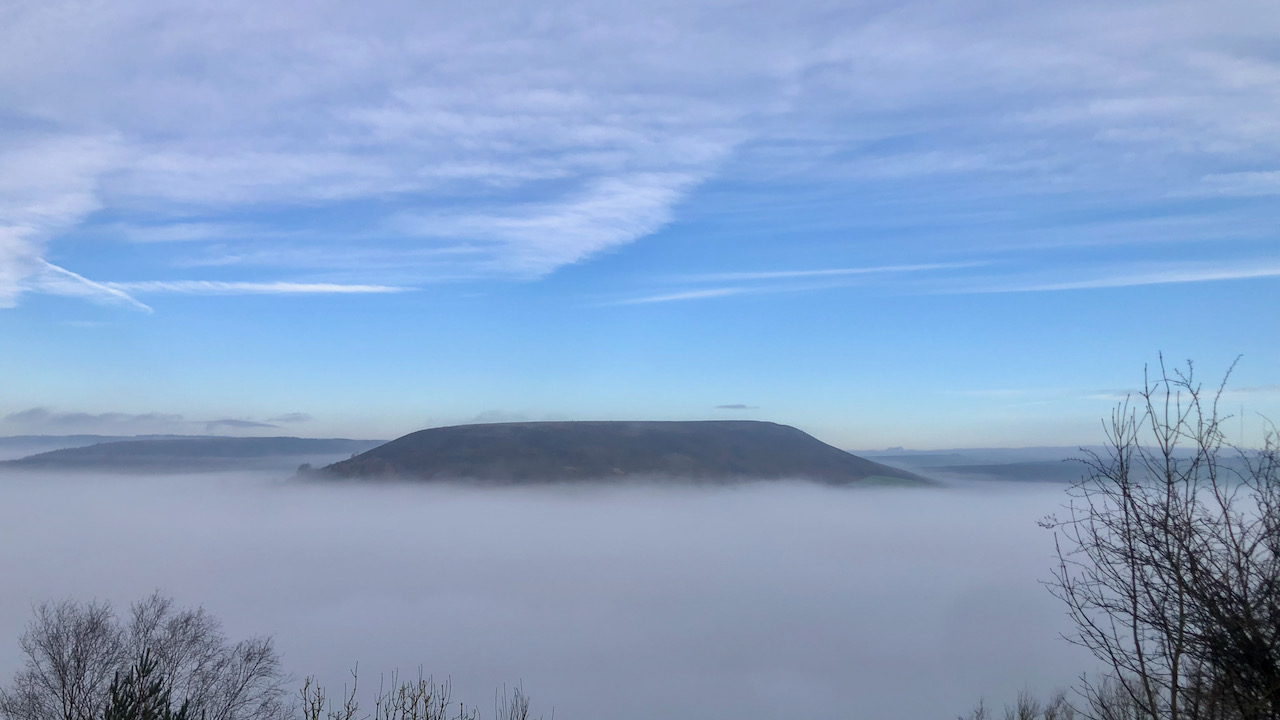It was a magical moment, ascending from the sombre depths of Bilsdale up Newgate Bank, when we emerged into a realm of brilliance and lucidity, with a cloudless azure sky adorning the western horizon.
And the formidable hogback of Easterside Hill loomed above the cloud like a sleeping behemoth. While the mist persisted in the dale below, swirling gently, an air of tranquillity and enigmatic serenity enveloped the surroundings.
Easterside should be a prominent landmark escorting us down Bilsdale, but is often overlooked, perhaps due to its familiarity, perhaps because of our concentration on the sweeping curves of the B1257.
Its distinctive shape owes itself to a cap of Oolitic Limestone, resting atop a hard layer of Calcareous Grit, which in turn overlays a stratum of Oxford Clay, comprising softer mudstone shales that have been eroded to form the steep slopes.
Remarkably, prehistoric man seems to have disregarded the hill entirely, as its summit bears no trace of archaeological significance save for a lone post-medieval limestone quarry1Limestone Quarry at Easterside Hill. NYMNPA HER Record No: 13074.. Not until the mid-20th century does Easterside enter historical records.
On December 17th, 1942, a German bomber, a Dornier Do217 en route to attack York, met its demise on Easterside Hill. Flying at low altitude down Bilsdale, it collided with a wall at considerable speed shortly after 10:15 pm. The aircraft disintegrated upon impact, scattering debris across adjacent fields, with its engines coming to rest near Crow Nest. Its unexploded bombs were later safely detonated2‘Aircraft Accidents on the North Yorkshire Moors’. 2024. Yorkshire-Aircraft.co.uk <https://www.yorkshire-aircraft.co.uk/aircraft/planes/42/u5gr.html> [accessed 10 February 2024].
- 1Limestone Quarry at Easterside Hill. NYMNPA HER Record No: 13074.
- 2‘Aircraft Accidents on the North Yorkshire Moors’. 2024. Yorkshire-Aircraft.co.uk <https://www.yorkshire-aircraft.co.uk/aircraft/planes/42/u5gr.html> [accessed 10 February 2024]

Leave a Reply